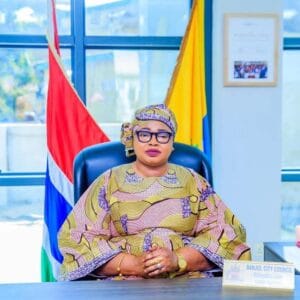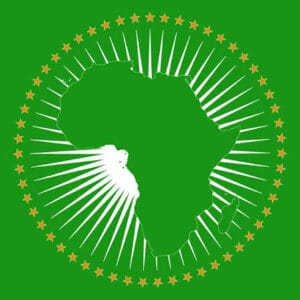High Seas Treaty needs African support to work

After nearly two decades of negotiations, consensus has finally been reached at the United Nations (UN) to protect marine biodiversity in the High Seas. On 3 March, President of the Intergovernmental Conference on Marine Biodiversity of Areas Beyond National Jurisdiction Rena Lee declared: ‘The ship has reached the shore.’
The High Seas, or Areas Beyond National Jurisdiction, are the international waters outside any country’s 200 nautical miles (322 km) exclusive economic zone (see map). States have exclusive jurisdiction over marine resources in this zone. However, managing the waters beyond has become an increasing cause for concern as human activities such as illegal fishing and chemical pollution persist in the absence of legal regulation.
The High Seas make up 60% of the world’s oceans and cover nearly half the Earth’s surface. However, only about 1% of these waters are under legal protection. This part of the ocean is considered pristine due to its remoteness. But conservation scientists argue that only 13% of these waters are ‘marine wilderness’ – areas free from human impacts. This is due to human stressors such as global shipping and overfishing, which threaten biodiversity.
The effects of human activities on ocean health are exacerbated by climate change. The ocean is both a major player in the climate cycle and also highly impacted by greenhouse gas emissions-induced global heating. It is an effective carbon sink, but increased greenhouse gas makes it difficult for the ocean to prevent global temperature rise.
The sea also absorbs almost 90% of the atmosphere’s heat. The resultant rise in sea temperature supports higher-frequency and more intense storm events, increasingly seen in Southern Africa. The concomitant ocean acidification potentially compromises marine resources – both living and mineral. And rising sea levels are worrying for coastal communities and island states.
Considering the impact of human activities, scarcity of marine resources, higher weather risk environments and maritime crime, a rules-based environment of the High Seas – as heralded by the new agreement – has much promise.
The High Seas Treaty demonstrates a shift in thinking from what has long characterised international law through the mare liberum (free seas) concept. The notion of ‘free seas’ suggested their availability for unregulated exploitation. The treaty shows that countries now recognise the need for cooperation to protect the ‘common heritage of humankind,’ as stipulated in the UN Convention on the Law of the Sea.
Advocate Thembile Joyini – legal adviser in South Africa’s International Relations and Cooperation Department and a member of the African group of negotiators for the High Seas Treaty – told ISS Today: ‘South Africa and the African group were, from day one, of the view that the common heritage of mankind must be in the new instrument, and this has happened. We therefore welcome the inclusion of the common heritage of mankind as the guiding principle for the interpretation and application of the [treaty].’
Delegates from 160 countries agreed on a Framework that includes creating a network of marine protected areas in the High Seas, and impact assessments to ensure the responsible use of marine resources. It also included mechanisms for equitable resource sharing. If implemented, the treaty will be pivotal to achieving the recently adopted Kunming-Montreal Global Biodiversity Framework, which pledges to protect 30% of the land and sea habitats by 2030.
At a time when world leaders appear divided on many issues, agreement on the High Seas Treaty is a rare triumph for multilateralism. It is an opportunity for cooperation between countries to play a crucial role in ocean governance.
Africa is disproportionately affected by illicit maritime activities linked to environmental crime, illegal, unreported and unregulated fishing and other issues rife in the High Seas. Countries on the continent must play a leading role in ensuring that the High Seas Treaty agreement comes into force.
With 54 African states represented at the UN, the continent is the world’s largest regional voting bloc and has an important legacy of leadership on ocean governance. The exclusive economic zone concept was a result of contributions from Kenyan legal scholars Frank Xavier Njenga and Andronico Adede. The concept gives coastal states sovereign rights over their waters and the seabed within its zone to ensure equitable access and resource-sharing by all states.
Newly independent African countries played an integral part in negotiations on the UN law of the sea convention between 1973 and 1982 by sponsoring a resolution to establish a standing committee to study the fair use of High Seas’ ocean resources. Twenty-six African countries representing 48% of the total votes ratified the convention by 1992, bringing it into force and demonstrating strength in numbers.
Celebrating the proverbial ship reaching the shore is a landmark achievement, but the ship hasn’t yet docked. Urgent action is still needed. Sixty ratifications are required for the agreement to enter into force, and the longer that takes, the greater the potential for irreversible marine biodiversity degradation.
The African Union (AU) has an essential role in building consensus among African countries on ratifying the agreement. The African group of negotiators for the High Seas Treaty is well-versed in such negotiations. Joyini noted, ‘The African group negotiated as a group, and the unity within the group was amazing.’
The AU must build on this momentum by encouraging member states to sign and ratify the treaty. This advocacy should be merged with continued calls to ratify Africa’s maritime governance frameworks, including the Revised African Maritime Transport Charter and the African Charter on Maritime Security, Safety and Development in Africa (Lomé Charter).
The slow commitment to both charters is worrying, but the swift ratification of the African Continental Free Trade Agreement and the strength of the African group means prospects are good.
Africa already shows innovation and leadership in ocean conservation. African-led initiatives such as the Great Blue Wall can create interconnected, protected seascapes through international cooperation and protecting 30% of the ocean by 2030, while empowering local communities through fair, inclusive and participatory governance.
Timothy Walker, Project Lead and Senior Researcher, Maritime, Dhesigen Naidoo, Senior Research Associate, Climate Change and David Willima, Research Officer, Maritime, Institute for Security Studies (ISS)













